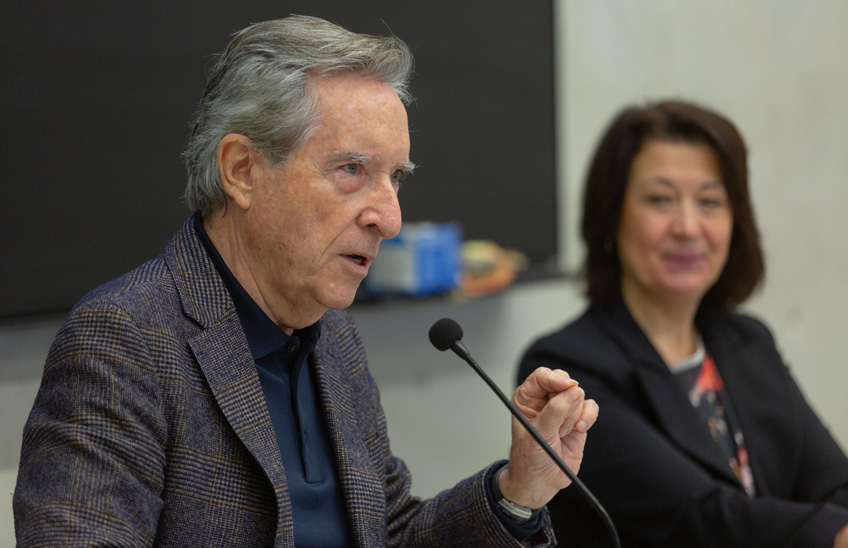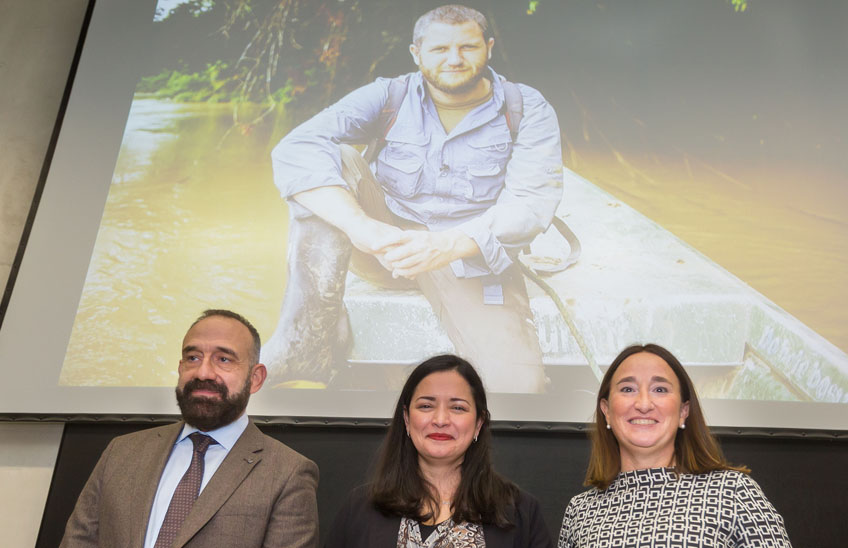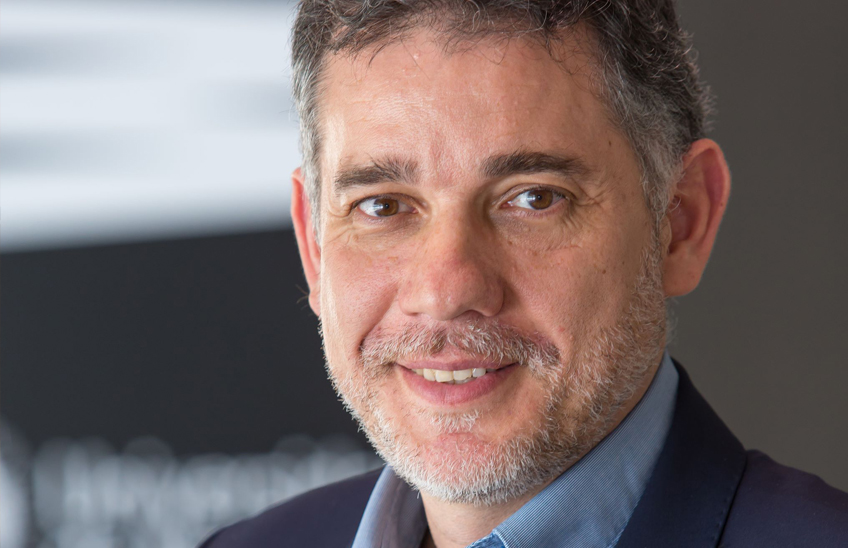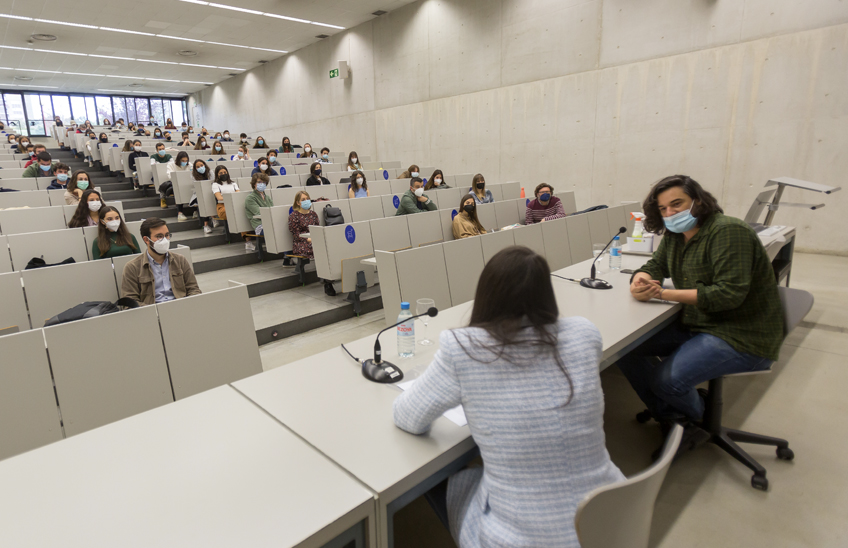Journalistic quality and plurality: keys to news trust in the age of artificial intelligence
59% of Spaniards are aware of artificial intelligence, but 44% feel uncomfortable with AI-generated news
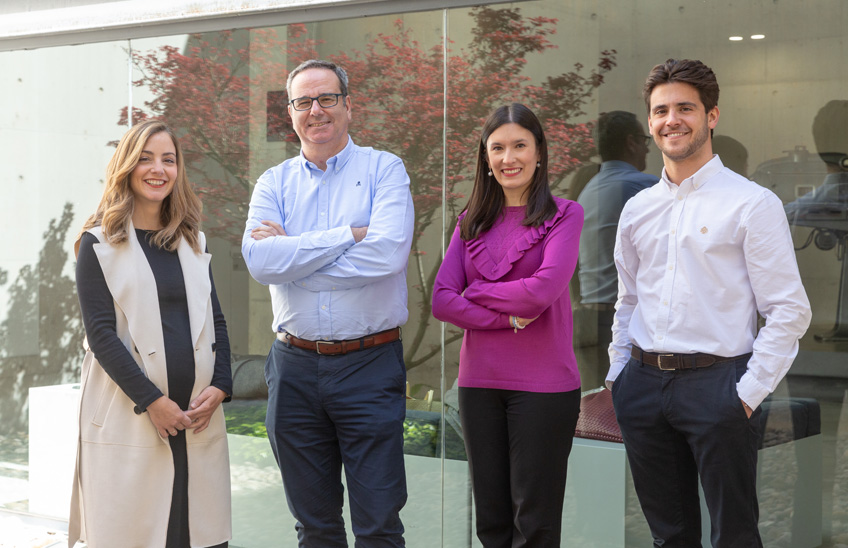
PhotoManuelCastells/DNR Spain 2024 researchers. From left to right, Roncesvalles Labiano, Alfonso Vara, María Fernanda Novoa and Aurken Sierra.
17 | 06 | 2024
Quality, independent and plural journalism is more necessary than ever in a news scenario marked by distrust and disinterest in the news, and the irruption of AI and new news referents.
The use of AI in the generation of journalistic content worries 60% of Spaniards in the case of relevant news, and 44% are not comfortable in general with AI-generated news. Added to this is the increase in the informative use of social networks (39% of those under 35 years of age point to social networks as their main information source ), the overabundance of content, the absence of verification mechanisms, anonymity and the rapid viralization of messages -authentic or fake-. These are some of the data highlighted by the report Digital News Report Spain 2024prepared by researchers from the School of Communication of the University of Navarra at partnership with the University of Oxford.
The avalanche of news explains in part the news fatigue that 44% of those surveyed say they suffer from and which is manifested in a growing information disconnection, in the drop in news consumption through almost all media (digital or not) and in the increase in the demand for new news formats such as podcasts or news videos.
67% of those surveyed value plurality as important, but only 53% consider that the media are fulfilling this function. On the other hand, the data of survey shows that Spaniards especially value that the news keeps them informed of what is happening on a daily basis (74%), that it helps them to understand more about different topics and events (69%), that it offers them different points of view on current affairs (67%) and that it provides them with useful information and internship for their daily lives (63%).
One third of the population avoids the news and almost 50% feel saturated
Thirty-seven percent of respondents report avoiding news on a regular basis, 8 points more than in 2023. In addition, young people under the age of 34 avoid news more often (44%) than those over that age (35%).
According to the study's researchers, the relationship between news avoidance and news fatigue is a complex phenomenon that reveals important trends in citizens' behavior, especially in terms of their ideological positioning. In general terms, the values of information fatigue among all Spanish respondents (44%) are higher than those of news avoidance (37%). However, both phenomena prove to be closely related. The feeling of overexposure to news increases to 58% among those citizens who say they avoid news. In other words, more than half of Spaniards who avoid the news report feeling news fatigue, suggesting a close relationship between the two phenomena.
Users who show a high interest in the news report a lower level of information fatigue, with a percentage of 38%. In contrast, those who show little interest in the news show a higher level of fatigue (58%), confirming the hypothesis put forward previously and which linked information avoidance and fatigue: the Spaniards who feel the most fatigue are also those for whom information is not relevant.
WhatsApp becomes the leading information social network in Spain, displacing Facebook network
With regard to social networks in Spain, the continued dominance of WhatsApp as the social network most used by those surveyed network stands out. Seventy-five percent of Spaniards say they use it regularly. It is also the social network most used by Spaniards to discover and share news. Twenty-seven percent of those surveyed say they use it for information purposes, a percentage that exceeds that of Facebook (26%), which falls to second place for the first time since the study's historical series began. The informative use of X (28%) and TikTok (23%) also stands out among those under 35 years of age.
Among the social networks most consumed by Spaniards are also Instagram (52%), Facebook (52%) and TikTok (26%). These data, in some cases, exceed average of use compared to other countries included in the Digital News Report. This is B the case of TikTok or Instagram, whose use in Spain is three and ten percentage points higher than average, respectively. However, it is WhatsApp that stands out most significantly, with usage fourteen percentage points higher in Spain (75%) than in the rest of the countries surveyed. In fact, the high use of WhatsApp in Spain is only surpassed in Europe by Italy, where it is used by 78% of respondents.
Television maintains its news leadership in Spain (56%) while social networks lose ground (48%)
The use of media in Spain reveals a slight drop in the preference for digital media, while traditional media maintain a constant level of use. Television continues to be the predominant medium, with 56% of Spaniards turning to it for information.
Loss of confidence in news in general is halted
33% of those surveyed trust the news on a regular basis and 40% trust the information they consume on a regular basis. Transparency in information processes, fair representation of citizens, the long history of journalistic brands and their high journalistic standards are key to regaining trust in information.
The survey Digital News Report and the report Digital News Report Spain
The authors of the report Digital News Report Spain 2024 and responsible for the interpretation of these data are researchers at School of Communication of the University of Navarra, sponsor and partner academic since the 2014 edition. Digital News Report is a project of the Reuters Institute for the Study of Journalism at the University of Oxford, based on a survey conducted by YouGov covering 47 markets.
The survey is based on an online panel from which a sample of more than two thousand people (N = 2060) is taken, representative of the adult population connected to the Internet, based on various demographic, socioeconomic and territorial factors. The work fieldwork in Spain was conducted at the end of January and beginning of February 2024.
The report Digital News Report Spain 2024, with dozens of graphics, is available openly available for enquiry and attribution.
This project is part of the area Society and Digital Communication of the University of Navarra's Strategy 2025.
This publication is part of project of research and development+i Medios nativos digitales en España: tipologías, audiencias, construcción de la confianza y claves para la sostenibilidad periodística - DIGINATIVEMEDIA - reference letter PID2021-122534OB-C22, financed by Ministerio de Ciencia e Innovación/Agencia Estatal de research /10.13039/501100011033/ and Fondo Europeo de development Regional "Una manera de hacer Europa".

